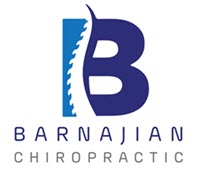Over 100 years ago, chiropractic health care was founded by Dr. D.D. Palmer. He had a simple theory: that good health can be sustained naturally, without the use of drugs or surgery, by removing vertebral subluxations and allowing the nervous system to function properly.
His theory has stood the test of time. This section will briefly explain how the theory was proven by taking you “behind the scenes,” into the field of chiropractic research.
1895–Present: Scientifically Proven
Since the first chiropractic adjustment in 1895, the chiropractic profession has rapidly grown to be the third-largest field of health care behind medicine and dentistry. The reason for the growth of chiropractic is simple: chiropractic is based on sound, scientific principles that have been proven with thorough research.
Investigations and inquiries have been conducted worldwide by government agencies, universities, health-care facilities, and private- and public-sector research organizations. The following paragraphs summarize some of the landmark research studies that have resulted in widespread recognition of chiropractic as a sound health-care choice.
Government of New Zealand. The New Zealand Commission Report was published in 1979 and was the culmination of two years of interviews from health-care experts on the efficacy and safety of chiropractic. The government of New Zealand funded the study, which concluded that modern chiropractic is a “soundly-based and valuable branch of health care in a specialized area.”
Wilk, et al, vs. American Medical Association (AMA) Lawsuit. Another inquiry that further validated chiropractic came about in 1987 through an antitrust suit filed by four doctors of chiropractic against the AMA. A federal appellate court judge ruled that the AMA had engaged in a “lengthy, systematic, successful, and unlawful boycott” of chiropractic.
During the legal proceedings, studies comparing chiropractic care to medical care were presented that showed how chiropractors were “twice as effective as medical physicians, for comparable injuries, in returning injured workers to work at every level of injury severity.”
Since the court findings and conclusions were released, a growing number of medical practices, hospitals, and health-care organizations in the United States now include the services of chiropractors.
Ontario Ministry of Health. In 1993, the Ontario Ministry of Health published the Manga Report, which was a review of literature on the most effective and cost-effective treatments for of low-back pain. After reviewing all available international evidence, the researchers concluded that chiropractic is “greatly superior to medical treatment in terms of scientific validity, safety, cost-effectiveness, and patient satisfaction.”
The Agency for Health Care Policy and Research (AHCPR). In 1994, the AHCPR of the United States Department of Health and Human Services released guidelines for the management of lower-back pain.
The guidelines, which were intended to assist primary-care physicians, were developed by a panel of 23 professionals, including medical doctors, chiropractic doctors, nurses, experts in spinal research, and physical therapists. The panel concluded, among other things, that chiropractic treatment (specifically, spinal manipulation) is recommended for acute low-back problems in adults and should be pursued (in most cases) before pharmaceutical or surgical treatments.
Present-Future: Ongoing Research
Health-care practitioners in all fields rely heavily upon data made available as a result of clinical research. As the chiropractic profession continues to grow, so does our need to conduct research. The acceptance of and the increase in the utilization of chiropractic care depends largely upon research addressing questions of effectiveness, safety, practicality, and cost-effectiveness.
Who does the research?
The following is just a sampling of organizations, publications, and private and public institutions where chiropractic research may be conducted.
There are entire organizations devoted to chiropractic research (e.g., the Foundation for Chiropractic Education and Research, the Consortial Center of Chiropractic Research), as well as journals (e.g., the Chiropractic Research Journal, the Journal of Vertebral Subluxation Research).
In addition, there are research departments associated with each of the 23 chiropractic colleges around the world (e.g., the Palmer Center for Chiropractic Research, the National University of Health Sciences). Professionals from different organizations commonly collaborate on research projects.
Research has also been conducted around the world by governmental organizations (e.g., the United States Department of Health and Human Services, the Ontario Ministry of Health), academic institutions (e.g., University of Pittsburgh Medical Center, Welsh National School of Medicine), medical journals (e.g., the British Medical Journal, the Journal of Family Practice), and private research organizations (e.g., RAND, the Gallup Organization).
What do they study?
Topics of research vary widely and include anatomy, neurology, biomechanics, neurophysiology, instrumentation, public health, geriatrics, and human performance. The fundamental goals of the researchers are to promote and further chiropractic education and health care.
In conclusion
The purpose of chiropractic research has been (and still is) to provide information needed to document and improve chiropractic health care worldwide. Our profession has seen advances once thought impossible due to the impact of scientific research.
For example, federal grants for chiropractic research are now a reality. The Department of Defense formed a committee to introduce chiropractic services into the United States military. Several managed-care organizations now recognize us as qualified primary-care providers. And there is an ever-growing public awareness of the benefits of chiropractic care.
Feel free to do your own research— at work, at school, at your health club or rec center. Ask around. You will hear countless success stories on how chiropractic has helped people recover from an accident, an injury, a tense period in their life, etc., or how chiropractic has helped them develop new, healthier lifestyle habits.
Collect more data by making an appointment with us today. You will be pleased with the results.
